After arriving in the U.S. to study or work, it is very likely that you will need to move while living in the U.S. and this article will be discussing how you would do that. For international students (F1 visa, M1 visa, J1 visa), you may have to move to another geographical location during your practical training time (OPT, CPT, PT, AT) which might be during summer breaks or after graduation.
Table of Contents
Moving Long Distance
When you are moving far away from where you are living, the best option would be to sell the furniture because hiring a moving company to deliver furniture is very expensive in the U.S.A. Unless the furniture is very valuable, most of the time it would be more logical to sell it or even donate it if you do not want to deal with the hassle of meeting with buyers.
So, for example, if you are moving a one-bedroom apartment cross state from New York City to Los Angeles using a professional moving company, the average should at least be around $5000 USD to $10,000 depending on how many things you have and the exact distance. Most international students (F1 visa, M1 visa, J1 visa) usually do not have that much valuable furniture and the cost of moving those furniture would probably be more expensive than the price of the furniture. So, in most scenarios for international students moving cross country (or any type of long distance moving), selling or donating furniture before moving would be more logical.

SELLING
The following paragraph includes resources on where to sell your used-items before moving in the U.S.A.
Selling Everything You Are Not Bringing
Before moving in the U.S.A., you should get rid of everything that is easy to replace or not valuable to you and replace all those things after you move. You can get rid of your items by selling them or by donating them.
Selling Used Items in The U.S.
- Student Facebook Group (usually there are always some facebook group where the U.S. school’s students can sell things which should be the fastest way to sell)
- Craigslist
- Facebook Marketplace
- Offerup
- Ebay
- Remoov
- Recycler
- Chairish (higher quality furniture & home décor items)
- 1stDibs (higher quality furniture & home décor items)
- Local consignment store
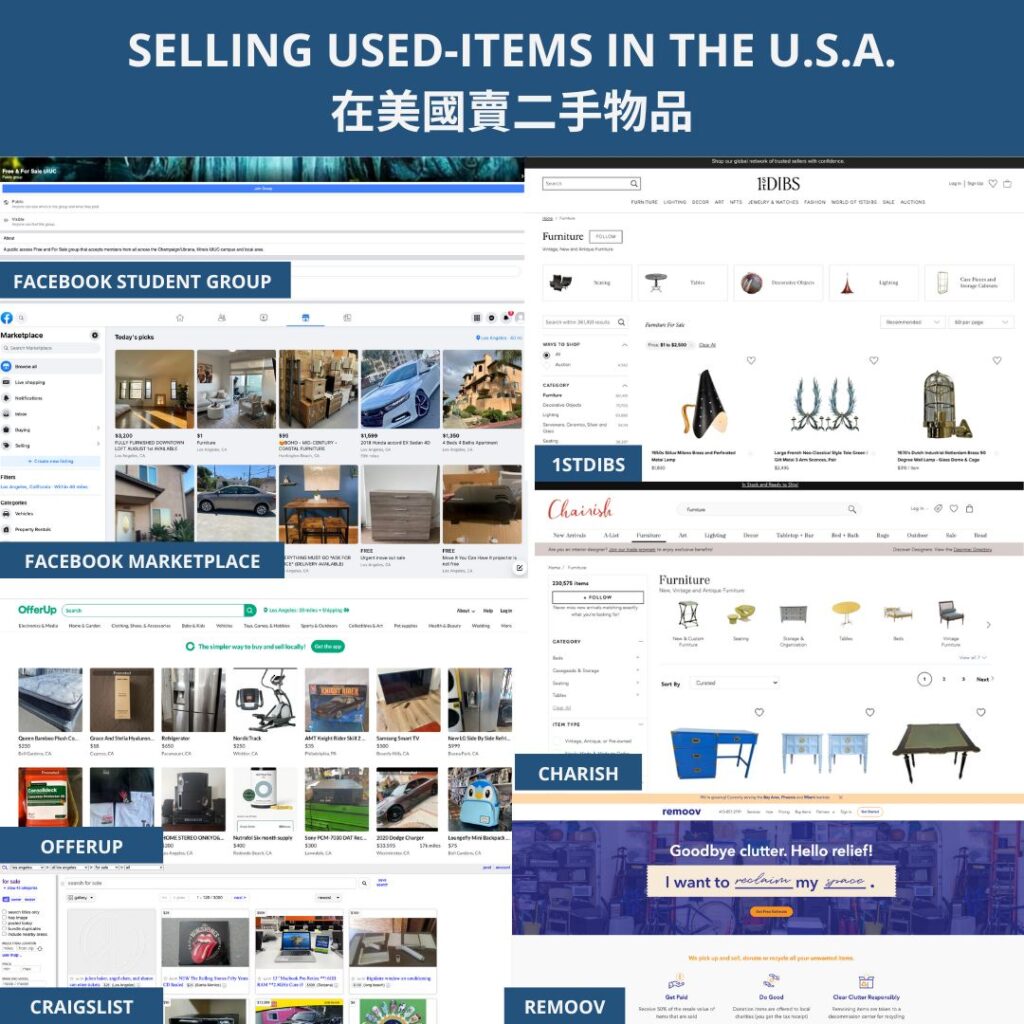
Sell Back Your Textbooks (Textbook Buyback)
Before moving in the U.S.A. as an international student (F1 visa, M1 visa, J1 visa), you can sell back your textbooks online. You can use sell-back price comparison websites first to see which online platform is offering the highest price for your textbook. The process is usually simple and easy. Usually, the used-book company will give you a shipping label and then you just mail it in to the used-book company.
- BookFinder
- BookScouter
- Amazon or Ebay (only if you want to sell it to a buyer yourself)
- Campus Bookstore
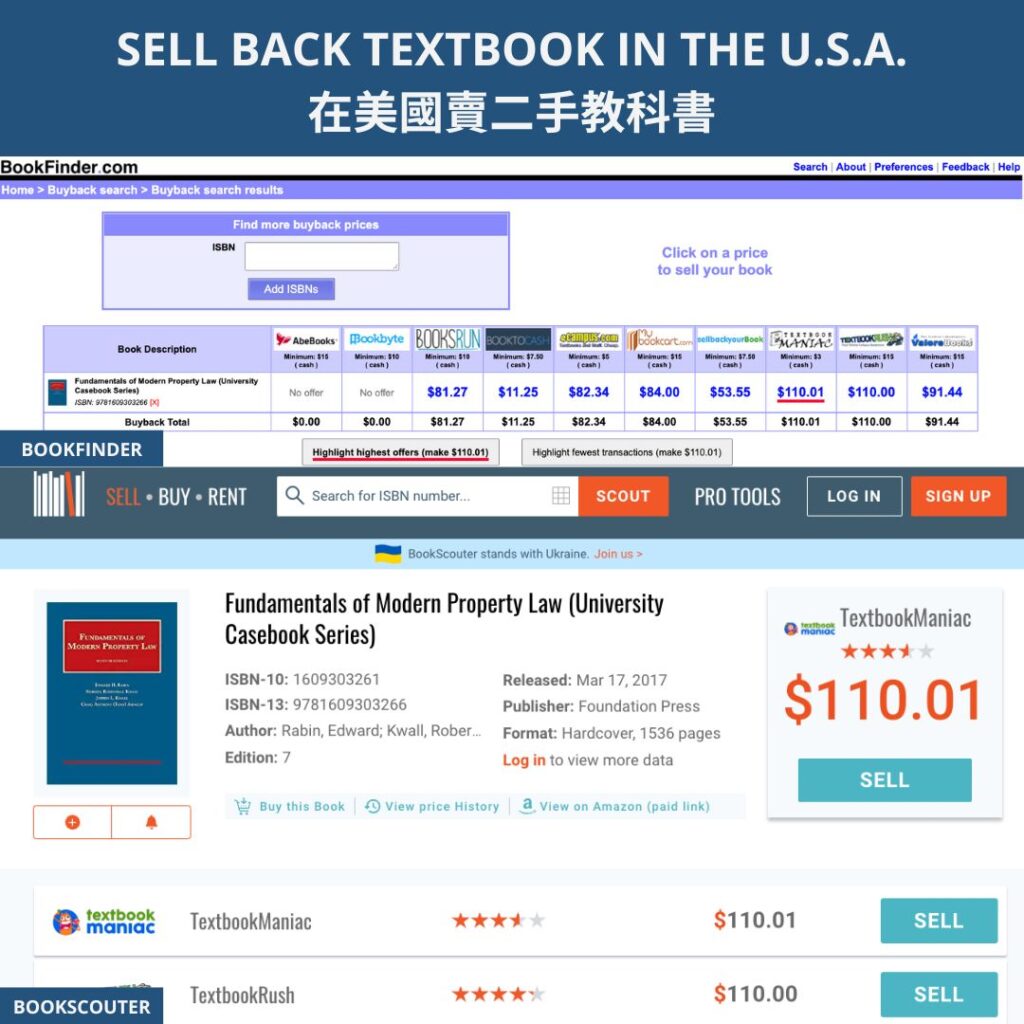
Selling Used-Clothes Online In The U.S.A.
If you are getting rid of a lot of clothes and do not want to deal with listing the item to sell it before moving in the U.S., you can consider mailing it to thredUP where they choose what clothing items to list for people to buy online and what to throw out. If you use thredUP, you won’t need to deal with taking photos and selling the item yourself, however, the payout is much lower than selling it yourself.
- thredUP (you send all your clothes with a clean-out bag that has a prepaid shipping label they provide and they sort out the clothes and decide what to sell: you don’t need to do any listing and you only get paid if your item sells)
- Poshmark (it is like ebay for clothes where you will need to take photos and sell directly to the customer, similar to Depop)
- Depop (it is like ebay for clothes where you will need to take photos and sell directly to the customer, similar to Poshmark)
- The RealReal (this is for when you have used luxury-based designer items that you want to sell)
- Vestiarie Collective (this is for when you have used luxury-based designer items that you want to sell)
- Crossroads (similar to thredUP, where you can order a free clean-out bag with a pre-paid shipping label to mail in, and they will evaluate what they intend to sell and pay you)

DONATION
The following paragraph includes resources on where to donate your used-items before moving in the U.S.A.
Donating Unwanted Items
When donating, you have to check the specific charity to see what type of items they accept and if they have a location where you are in the U.S.A. For example, some charities such as Pickup Please do not accept large furniture or appliances such as sofas or TVs.
Also, some U.S. charities allow you to schedule pickups from you and some require you to bring the item to their location. So, you would have to check if it works for your situation.
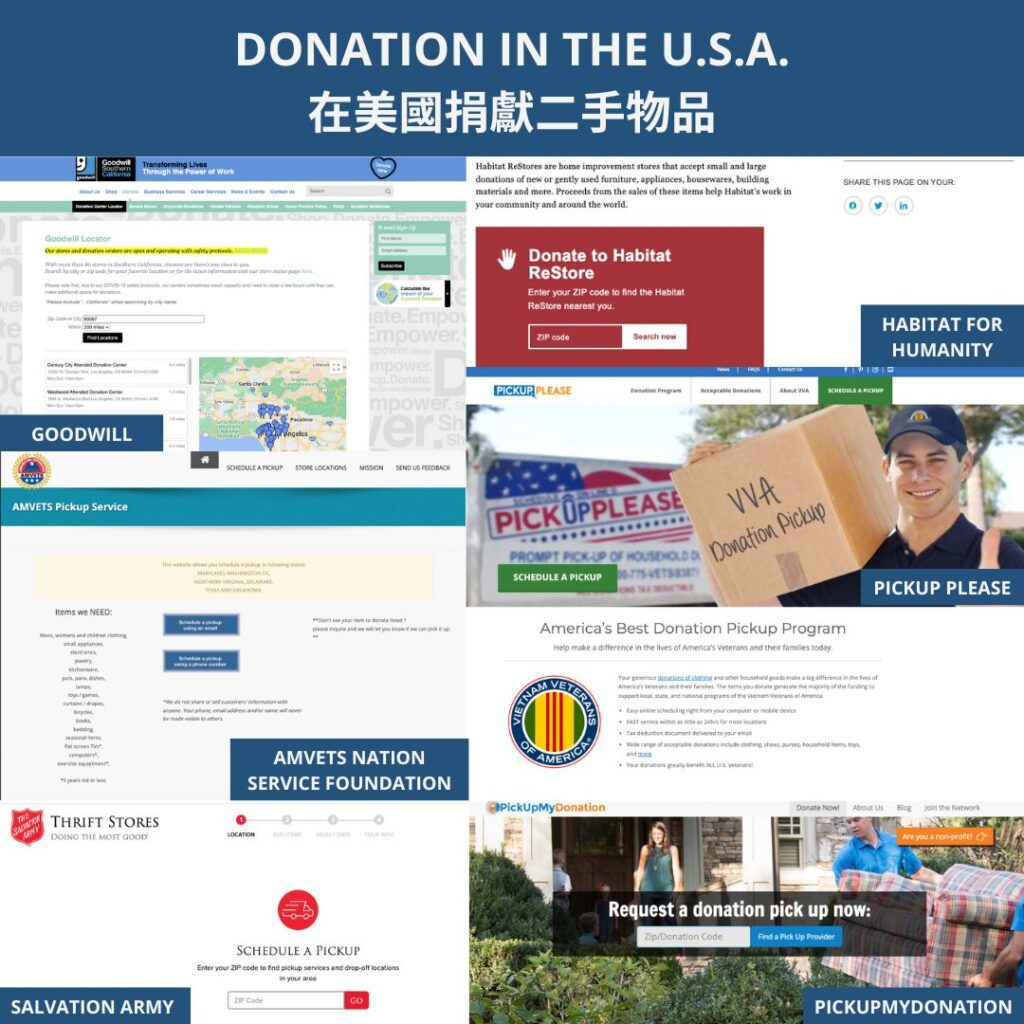
MOVING
When moving in the U.S., you have to first decide if you want to move with a professional moving company or by yourself. The cost of moving with a professional company is not cheap in the U.S. and you will need to remember to add a tip to the movers. The moving costs in the U.S. can change depending on the exact miles, season, availability, the weight of your items…etc.
Before moving in the United States, you can first get a general idea of how much the move might cost you through different moving methods using a moving cost calculator for evaluation.
Best And Cheapest Way For International Students To Move Long-Distance In The U.S.
The best way and cheapest way for international students (F1 visa, M1 visa, J1 visa) to move long-distance, would be to sell all furniture and unwanted items locally and then drive your car to the new location. You can load the important items on your car and mail unimportant small items in boxes to the carrier’s location (such as the USPS office closest to your new place). You can also load extra items onto the top of your car by using a “car roof cargo carrier” if you do not have enough space inside your car.
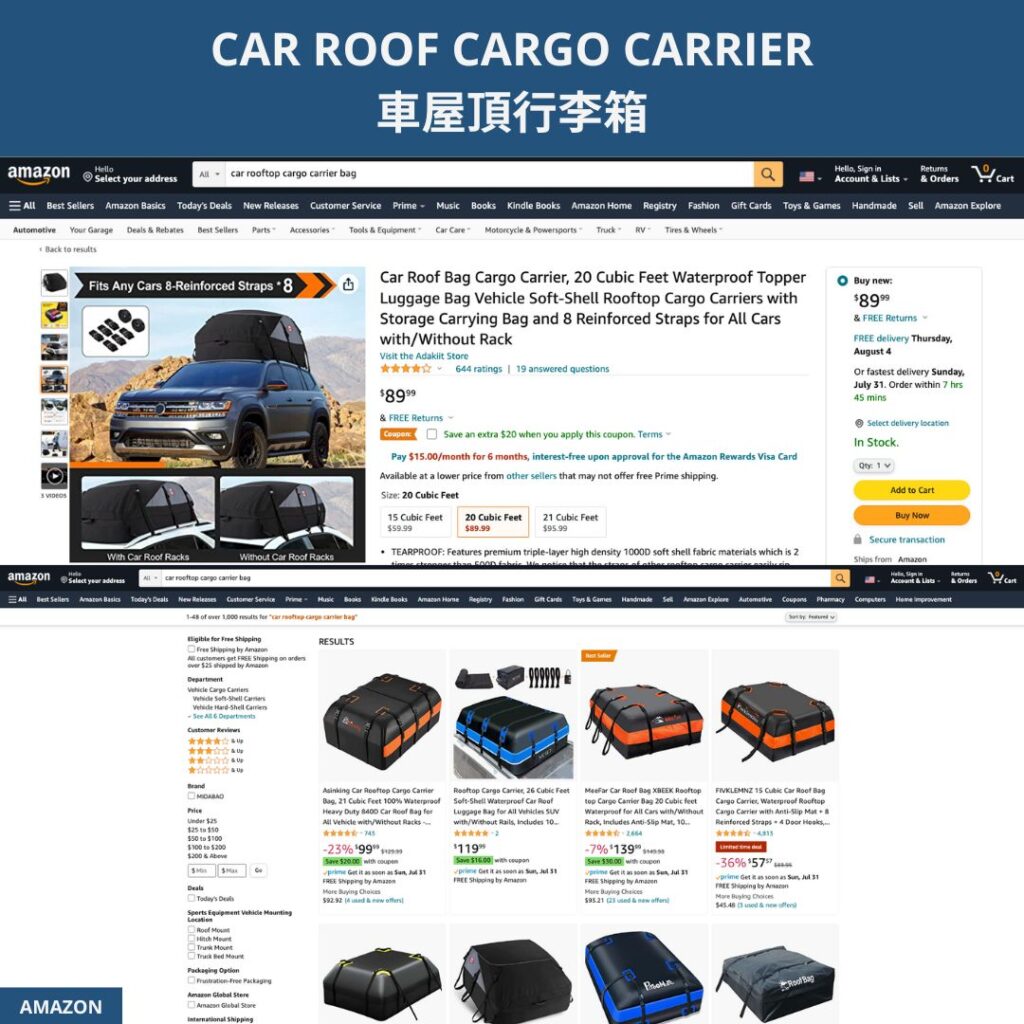
Shipping Your Items In Boxes
- USPS
- Fedex
- UPS
- DHL
- Pirateship
- Amtrak Express Shipping (no electronics or furniture)
- Greyhound Package Express (no fragile items)
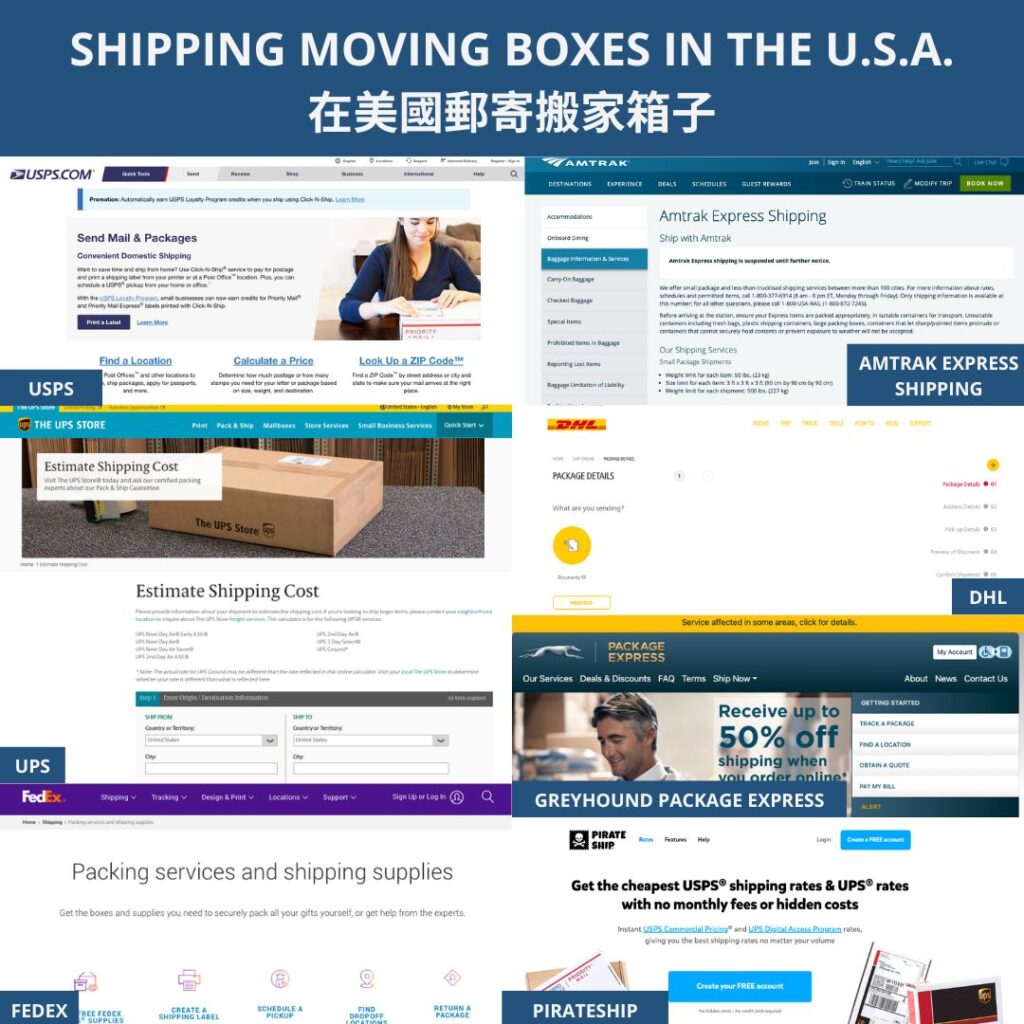
However, if you have larger items you would like to move with you in the U.S., you would then have to consider using a professional moving company, moving pods, or rent trucks.
Professional Moving Companies
Reputable professional moving companies in the U.S.A. are not cheap. Using a professional moving company in the U.S. for a short-distance local move, could still be around at least $500 to $1000 USD for a one bedroom or studio. For long distance moving using professional moving companies in the U.S., one-bedroom or studio’s could cost at least around $5000 to $10,000 USD.
Some Commonly-Known U.S. Professional Moving Companies

Moving Pods
A cheaper way to move larger items such as furniture yourself in the U.S. is using moving pods. Moving pods are large containers, where the company drops it off to where you live and you fill it up with the items you want delivered. After you fill the moving pod up, the shipping company will come pick it up and deliver it to your new apartment or house. Also, moving pods works best for houses, because sometimes apartment complexes do not allow moving pods to sit in the parking lot for a long time.
Moving pods is a cheaper alternative to using professional moving companies, however, it is still not cheap for long-distance moves in the U.S. Using moving pods for long-distance (such as from New York City to Los Angeles) one-bedroom or studio moves could cost at least around $3000 to $4,000 USD.
Some Commonly-Known U.S. Moving Pod Companies
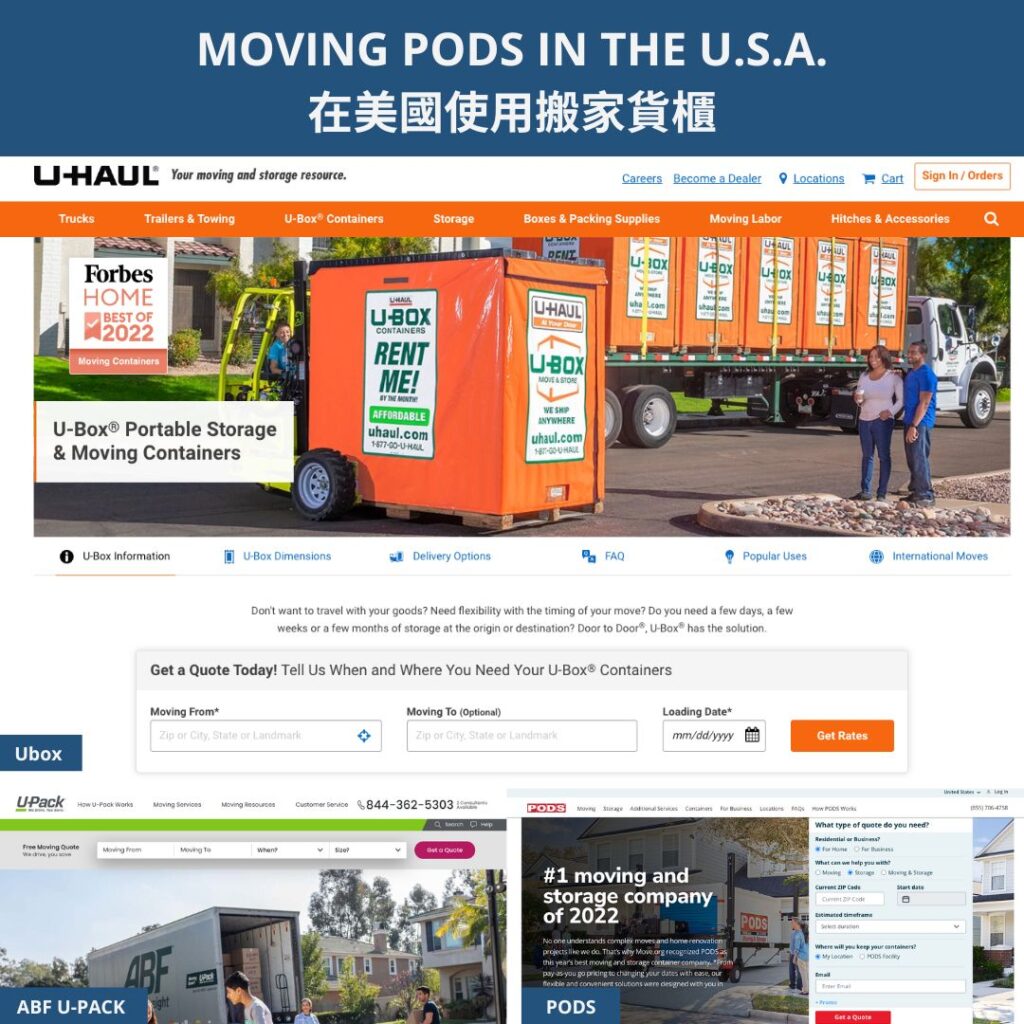
Rent Trucks
Another cheaper way to move bigger items such as furniture yourself in the U.S. is using rental trucks. Renting trucks to move is very common in the U.S. and the whole process is quite simple. You rent and pick-up the truck from the rental truck office near where you currently live and then drop-off the truck to the rental truck office near where you move to. The pick-up and drop-off usually can be done just using the rental truck company’s app such as U-Haul.
Renting trucks for long-distance one-bedroom or studio moves such as from New York City to Los Angeles, could cost at least around $3000 to $4,000 USD.
Some Commonly-Known U.S. Moving Rental Truck Companies
Renting Trucks Just For A Shorter Time Frame

Moving Shipping Bidding
In shipping bidding websites, you can list what you want to ship in the U.S. and people can bid on the job. You will need to be more careful when using this and look at reviews because the people who bid are private third-party individuals.

Rent Movers
You can also find movers to rent for the hour in the U.S. if you just need some extra help with moving.
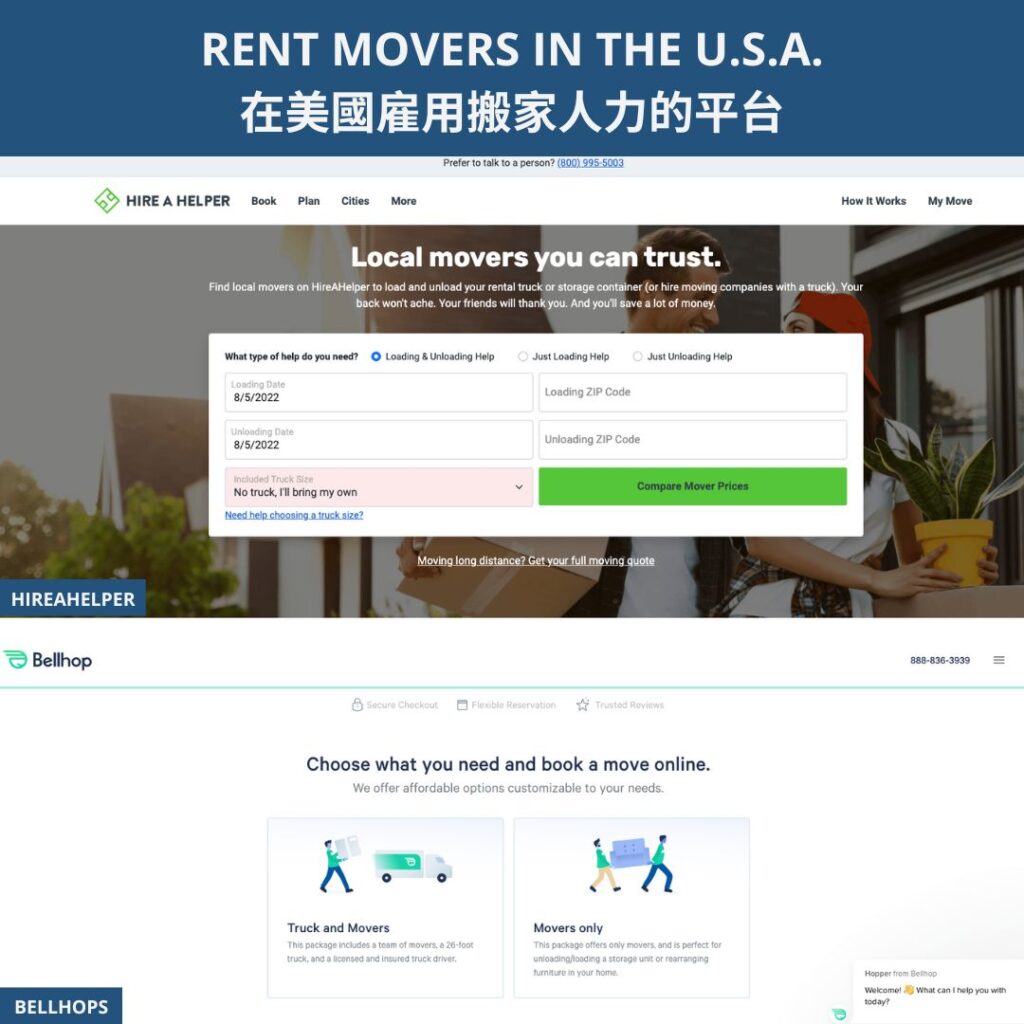
Some Last Tips On Moving In The U.S.A.
- Moving in the summer time (May to September) is more expensive than moving in the winter
- Moving on the weekends or at the end of the month usually is more expensive
- Some mattress now can be shrunk into a smaller size so you can load it into your car

RELATED ARTICLES
- H1B Work Visa (Specialty Occupations)
- Employment-Based Green Card Overview (Lawful Permanent Resident)
- Family Based Green Card Overview
- Marriage Based Green Card (IR1 / CR1 / F2A)
- Useful Apps to Download While Living in the U.S.
- A Guide to Moving in the United States of America (USA)
- A Guide to Searching and Renting Apartment or Houses in the U.S.
- A Guide for International Students Studying in the U.S.
- A Checklist of Things that an International Student Should Prepare Before Coming to the U.S.
- A Checklist of Things that an International Student Would Need After Arriving to the U.S.
- A Guide to Grocery Shopping in the United States of America (USA)
- Shopping Luxury or Designer Goods While in the Living in the U.S.

